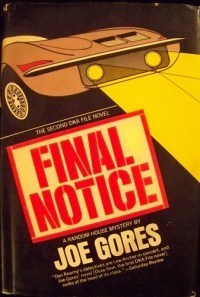Stable Strategies and Others by Eileen Gunn
 Wednesday, January 12, 2011 at 7:55PM
Wednesday, January 12, 2011 at 7:55PM 
Published by Tachyon Publications on September 1, 2004
I found Stable Strategies and Others after reading the story "Contact" in the anthology Proteus: Voices for the 80's. The story was so superior to the others in the collection that I decided to look for other works by Eileen Gunn. Stable Strategies and Others is what I found, and all that I found in book form. She does have some other stories, available to read at no charge, on her website.
Stable Strategies and Others collects Gunn's stories through the date of the book's publication in 2004. It also includes a short introduction by Gunn's friend and fellow sf writer William Gibson; a short poetic ode to Gunn by Michael Swanwick; and an afterward by Howard Waldrop. Gunn follows each story with a brief description of its origin.
Gunn shows her amazing range in these stories. Some are wildly funny. The Hugo-nominated "Stable Strategies for Middle Management" is reminiscent of Kafka's "The Metamorphosis" with a comic twist: the narrator wakes up with certain attributes of an insect courtesy of a bioengineering experiment designed to make employees into "a more useful corporate organism." In the alternate history described in "Fellow Americans," Richard Nixon is a game show host, Geraldo is "a respected PBS commentator," and former President Goldwater ... well, you can guess how that turned out. Gunn's uncanny ability to write in Nixon's voice is spooky. To find humor in a bleak future where children grow up to have very close relationships with computer networks or don't grow up at all, Gunn wrote the Hugo-nominated "Computer Friendly" from the perspective of a precocious child. In Gunn's first commercially published story, "What Are Friends For?," alien invaders investigate porn.
Two stories are deeply moving. "Coming to Terms" examines death through the post-it notes the deceased left behind. "Contact" is a beautiful story about first contact with a bird-like alien who is preparing to die.
Two stories are co-authored. "Nirvana High," written with Leslie What, is a funny yet poignant look at the paranormal students attending the Kurt Cobain Magnet School. Isaac Asimov, Robert Heinlein, and computer whiz Grace Hopper all star (L. Sprague de Camp appears in a cameo role) in "Green Fire," written with Andy Duncan, Pat Murphy, and Michael Swanwick. The story begins as an alternate history taking place aboard a naval vessel during World War II before morphing into a tale of time/space/dimensional travel that brings the crew face to face with Quetzalcoatl. That story alone is worth the price of the book.
Gunn's other stories are harder to categorize. "The Sock Story" is "the story of a woman who lost her sock at the laundromat and discovered it contained part of her soul." A girl named Lichen learns how to change a world that has been altered by carp-eyed creatures in "Lichen and Rock." The least successful story, "Spring Conditions," is a horror story that might make you think twice about cross-country skiing. Gunn also included a deconstructed, politically correct recipe for fruit crisp; it's not sf and not a story so I'm not sure what to make of it, but it's amusing.
This is a first-rate collection by one of sf's masters of the short story. I recommend it not only to sf fans, but to fans of quality writing.
RECOMMENDED


